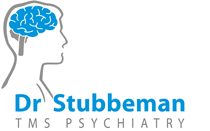
Transcranial Magnetic Stimulation for the Diagnosis and Treatment of Epilepsy
Vasilios K. Kimiskidis, Antonio Valentin, Reetta Kälviäinend | Curr Opin Neurol | 2014
Copyright © 2014 by WebMD LLC. All rights reserved.
ABSTRACT:
Purpose of review: The aim is to critically review recent advances emerging from the application of transcranial magnetic stimulation (TMS) as a research and clinical tool in the field of epilepsy.
Recent findings: A number of TMS–electromyography (EMG) and TMS–electroencephalography (EEG) studies have identified distinct changes of cortical excitability associated with specific epilepsy syndromes and in asymptomatic siblings of patients with epilepsy. Pharmaco-TMS studies have shed additional light on the effects of traditional and recently introduced antiepileptic drugs on excitatory and inhibitory brain microcircuits as well as cortical plasticity mechanisms.
In addition, stronger evidence has emerged that TMS may serve as a biomarker with prognostic (i.e. predicting response to pharmacologic or surgical interventions) and diagnostic potential (for instance aiding in the noninvasive localization of the epileptogenic zone). Finally, the role of repetitive TMS in the therapeutic management of drug-resistant epilepsies and refractory status epilepticus has been further defined and is expected to become more prominent by the optimization of the stimulation parameters.
SUMMARY:
TMS has provided important insight into the pathophysiological substrate of human epilepsies and emerges as a valuable tool with diagnostic, prognostic and therapeutic potential. The recent advent of TMS–EEG can be reasonably expected to contribute further significant advances to the field of epilepsy.
